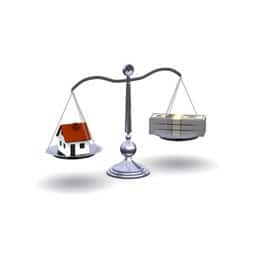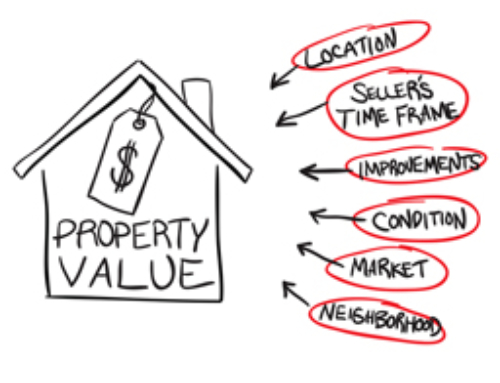 Balancing What the Bank Says You Can Afford and What You Can Really Afford
Balancing What the Bank Says You Can Afford and What You Can Really Afford
How much can I afford to spend?
That might be the most asked question among homebuyers. Just to make it extra confusing, the answer to that question depends very much on whom you ask.
A mortgage lender might approve you for one amount, based on a conventional debt-to-income (DTI) ratio, while you’ll get more money if you go for an FHA loan with higher DTI limits or for an FHA 203K loan, which qualifies you for up to 125 percent of the sales price if work needs to be done to bring the property up to code.
At the same time, it might be that none of those amounts is what you’re comfortable spending each month on your mortgage payment, real estate property taxes, and homeowner’s insurance premium.
My friend Ellyn faced this question some years ago. When she went to buy her first property, her lender qualified her for an amount that was three times as much as the rent she was paying. She thought that amount seemed dangerously high and asked me to take a look.
For a conventional loan (one that meets the guidelines set forth by Fannie Mae and Freddie Mac), a lender will allow you to spend 28 percent of your gross monthly income on your mortgage, taxes, and insurance, and up to 36 percent on your total debt. If you don’t have any other debts (school loan, car loan, or credit card debt, for example), you can spend up to 36 percent on your mortgage, taxes, and insurance.
At the time, Ellyn was earning about $50,000 per year, and the rent on her apartment was less than $400 a month. But her lender qualified her to spend about $1,170 on her mortgage, taxes, and insurance, which was 28 percent of her gross monthly income of $4,166.
However, Ellyn’s take-home pay was far less than her gross monthly income. She was bringing home about $2,300 per month after paying federal and state income taxes and her 401(k) contribution. The lender qualified her for a nearly $1,200 per month payment, which, along with her $400 in school and car loan payments, meant she was spending about $1,600 per month on her debts, leaving her with only $700 per month for everything else.
She asked me what I thought, and I told her that just because the bank says you can afford a payment doesn’t mean you really can. Whether the payment is affordable depends on your other monthly expenses and what you’re willing to give up for homeownership.
Homebuyers often forget that buying a home means you take on not only monthly mortgage, tax, and insurance payments, but also assessments (for a condo or co-op) and ongoing maintenance costs, which can add up.
In Ellyn’s case, she was planning on continuing her postgraduate studies and didn’t want to give up traveling, going out, and, most important, saving for retirement. She decided to spend less on her house payment and started shopping around for a less-expensive house.
Figuring out how much you can afford to spend on a house means thinking about your lifestyle and your debts, not just what the bank says you can afford.
 Ilyce R. Glink is the author of several books, including 100 Questions Every First-Time Home Buyer Should Ask and Buy, Close, Move In!. She blogs about money and real estate at ThinkGlink.com and at the Home Equity blog for CBS MoneyWatch.
Ilyce R. Glink is the author of several books, including 100 Questions Every First-Time Home Buyer Should Ask and Buy, Close, Move In!. She blogs about money and real estate at ThinkGlink.com and at the Home Equity blog for CBS MoneyWatch.
READ MORE:
4 Tips for Buying a HUD Home
Buying a New Home? Here Are 5 Things Your Builder Won’t Tell You
Reverse Mortgages: What’s New
Zero Down Home Loan Options






